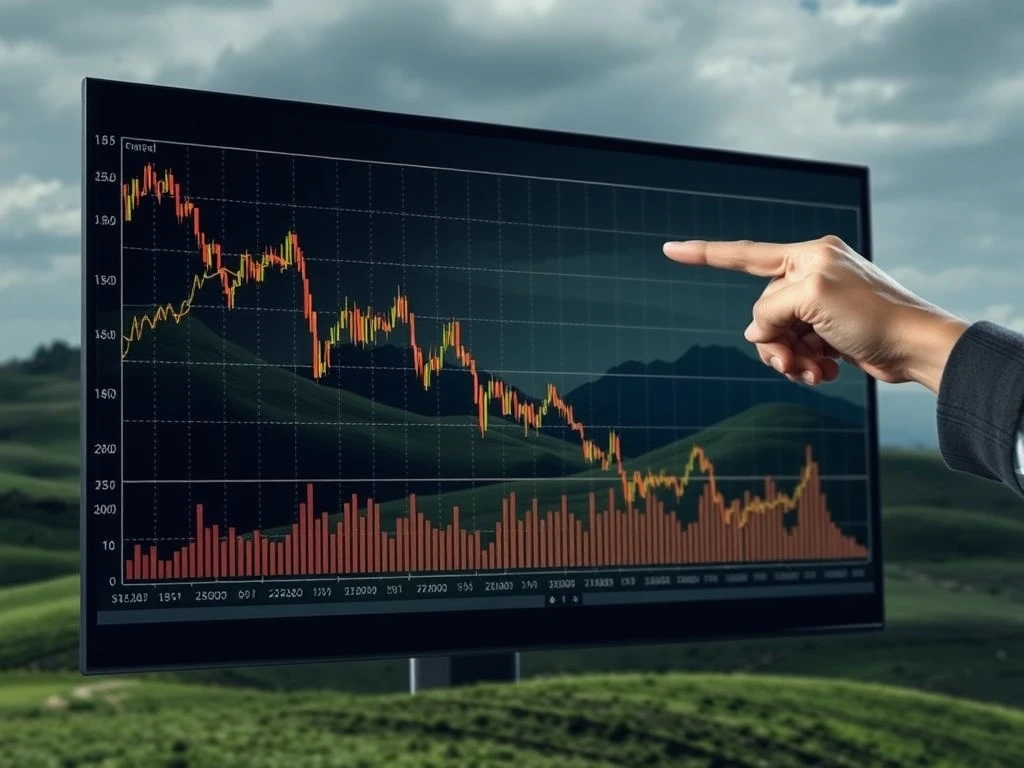The investment world recently witnessed a notable shift. January 2025 proved exceptionally challenging for many professional stock pickers. These active fund managers, renowned for their efforts to outperform market benchmarks, recorded their worst collective monthly performance of the year. This development has sparked considerable discussion across financial circles, highlighting the persistent difficulties in consistently beating broad market indices. Investors closely monitor these trends, as they impact portfolio strategies and future allocations. The struggle underscores a broader narrative about active versus passive investment approaches.
Stock Pickers Confront Market Realities in Early 2025
Early 2025 presented a complex landscape for active investors. Several factors contributed to the widespread underperformance among stock pickers. Market volatility remained elevated, making it difficult to identify consistent trends. Furthermore, specific sectors experienced rapid, concentrated rallies. These surges often favored large-cap technology stocks or specific growth industries. Consequently, many diversified portfolios struggled to keep pace. Fund managers who did not heavily weight these top-performing segments found themselves trailing the broader market significantly.

Historically, active managers aim to generate alpha. This means achieving returns above a benchmark, like the S&P 500 index. However, January’s results show a different story. Many actively managed funds fell short of their respective benchmarks. This underperformance was not isolated to a few funds. Instead, it was a widespread phenomenon across various investment styles and asset classes. Analysts are now dissecting the precise reasons behind this collective struggle.
Key Drivers of Underperformance for Active Managers
Several key elements explain the difficult start to 2025 for active stock pickers. First, market breadth narrowed considerably. This means fewer stocks drove the majority of market gains. When a small number of mega-cap stocks dominate returns, it becomes harder for active managers to outperform. Their diversified portfolios often include companies outside these top performers. Therefore, they miss out on a significant portion of the market’s upside.
Second, the influence of macroeconomic factors played a role. Inflation concerns persisted, and interest rate expectations fluctuated. Such environments create uncertainty. This uncertainty can lead to unpredictable market movements. Active managers thrive on identifying mispriced assets. However, extreme volatility can obscure true value. Consequently, their stock selection process becomes more challenging. They face increased difficulty in making timely and accurate investment decisions.
- Concentrated Market Gains: A few large stocks drove overall market performance.
- Macroeconomic Volatility: Inflation and interest rate uncertainty impacted valuations.
- Rapid Sector Rotations: Quick shifts between leading sectors caught some funds off guard.
- Passive Investing Momentum: Continued flow into low-cost index funds put pressure on active strategies.
The Enduring Debate: Active Versus Passive Investing
The recent underperformance of stock pickers reignites the long-standing debate. Should investors choose active management or passive index funds? Passive investing involves tracking a market index. It aims to match market returns, not beat them. This approach offers lower fees and simplicity. Over the past decade, passive funds have gained significant traction. Their consistent performance and cost-effectiveness appeal to many investors. This trend puts continuous pressure on active managers.
Active managers argue their value lies in specific situations. They can potentially outperform during market downturns. They also aim to capitalize on inefficiencies. For instance, they might identify undervalued companies. However, proving this value consistently remains a challenge. The data from January 2025 further supports the argument for passive strategies. It highlights the difficulty in consistently beating the market. Investors must weigh the potential for outperformance against the higher fees associated with active funds.
How Investors Are Responding to Active Fund Performance
Investors are increasingly discerning. They demand transparency and consistent returns from their fund managers. The poor performance in January 2025 will likely prompt re-evaluation. Some investors may consider shifting assets from underperforming active funds. They might move towards lower-cost index funds or exchange-traded funds (ETFs). This shift reflects a growing awareness of fees and long-term performance. Fund flows often follow performance trends. Therefore, this recent setback could impact future allocations to active strategies.
Furthermore, financial advisors are having more conversations with clients. They discuss the pros and cons of both active and passive approaches. Advisors often emphasize diversification and long-term goals. They also stress the importance of understanding fees. Ultimately, an investor’s choice depends on their financial objectives. It also depends on their risk tolerance and investment horizon. The current market environment provides a strong case study for these discussions.
Looking Ahead: The Future for Stock Pickers
Despite recent challenges, the role of stock pickers is not entirely diminished. They continue to play a vital role in certain market segments. For example, active management can be more effective in less efficient markets. These include small-cap stocks or emerging markets. Here, information asymmetry is greater. This allows skilled managers to find overlooked opportunities. Their research and analysis can uncover hidden value. Thus, their expertise remains valuable in specific niches.
Many active managers are adapting their strategies. They are incorporating advanced data analytics. Some use artificial intelligence to enhance their stock selection. Others focus on thematic investing or environmental, social, and governance (ESG) factors. These adaptations aim to create new avenues for alpha generation. The industry is evolving. Therefore, stock pickers must innovate to stay competitive. Their ability to evolve will determine their long-term success. The market constantly presents new challenges and opportunities.
The first month of 2025 served as a stark reminder. Consistently beating market benchmarks is an arduous task. It requires exceptional skill, deep market understanding, and often, a bit of luck. While passive investing gains ground, active management continues to seek its edge. The ongoing narrative of market efficiency versus human expertise will certainly continue. Investors will remain vigilant. They will observe how stock pickers navigate the remainder of the year. Their performance will shape future investment trends.
Frequently Asked Questions (FAQs)
1. What does it mean for stock pickers to ‘beat benchmarks’?
Beating benchmarks means an actively managed fund generates returns higher than a widely recognized market index. For example, if the S&P 500 returns 5% in a month, an active fund beats the benchmark if it returns 6% or more during the same period.
2. Why did stock pickers struggle so much in January 2025?
Several factors contributed. These included concentrated market gains in a few large-cap stocks, significant macroeconomic volatility, and rapid shifts between leading market sectors. These conditions made traditional stock selection more difficult for diversified portfolios.
3. Should I abandon active funds and only invest in passive funds?
Not necessarily. While passive funds offer lower fees and consistent market-matching returns, active funds can potentially outperform in specific market conditions or less efficient sectors. Your investment decision should align with your financial goals, risk tolerance, and time horizon. Diversification across both types can be beneficial.
4. What are the main differences between active and passive investing?
Active investing involves professional managers making specific investment decisions to outperform the market, typically with higher fees. Passive investing involves tracking a market index (like the S&P 500) with the goal of matching its performance, usually with lower fees and less management.
5. How can stock pickers adapt to current market challenges?
Many stock pickers are adapting by integrating advanced data analytics and artificial intelligence into their strategies. They are also focusing on niche markets, thematic investing, or ESG factors. Innovation and flexibility are key to their continued relevance and success in evolving markets.
























